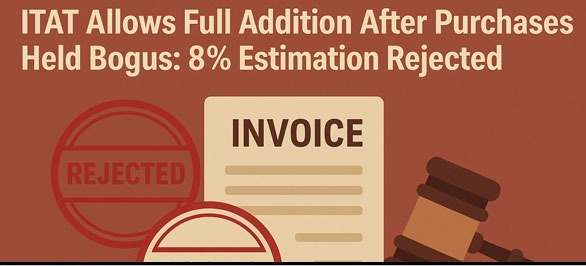1. This appeal arises out of an application for letters of administration with a copy of the Will annexed to the property of one Khirodebasini Debi who died on the 7th February 1911, after having it is said, executed her last Will on the 6th of February the day previous. The learned Judge has refused to grant letters of administration holding that there was no independent evidence as to the execution of the Will and that the attestation was not legally proved. The learned Judge found and we think rightly found upon the evidence that the lady wanted to make Will or in any case some disposition of her property in favour of the beneficiary, in this case, that is, Bhupendra Nath Roy Chowdhury the son of Muktanath Roy Choudhury. Of this there can be no doubt. She was living in the same house with Muktanath and his children and this boy Bhupendra Nath is said to have been very much loved by her. So far as the motive of the testatrix is concerned it is in favour of the Will having been executed. As regards independent evidence objection has been taken that nearer relations were not made to attest the Will nor her spiritual guide. Her nearer relations were, however, not residing at Cossipur where she resided and died. It is true that her spiritual guide resided at Cossipur. But as she did not want to make any disposition in favour of her spiritual guide it would not look proper to have the spiritual guide attesting a document in which he was disappointed of any expectation that he might have had upon the property of the dying widow. In any case the people who were about her and who were principally to be benefited by the execution of the Will would not take the initiative in calling the people who might induce her at her last moment to make deduction from what they expected to get, so that these other people might be benefited. Four witnesses are said to have attested the Will and all of them have been examined. With regard to Mukta who was the writer he cannot be said in this case to have attested the Will as a witness because there is no evidence that he signed the Will after the testatrix. As regards Kripa Nath the learned Judge is not inclined to believe that he was present at the time of the execution of the Will and we are not prepared to differ from him. As regards other witnesses, however'', there does not seem to be any particular reason for disbelieving them specially seeing that (he Will is in accordance with the wishes of the testatrix expressed during her lifetime before reliable witnesses. Now, as regards these witnesses -- Shibendra and Keshab, Shibendra guided her hand in fixing her mark and also put down the name of the testatrix under the mark by his own pen. If the writing of the name of the testatrix by her direction and by the pen of Shibendra be considered as the execution of the Will then Shibendra cannot be considered as an attesting witness. It is contended, however, that apart from that signature there is the mark and under the law execution was complete as soon as the testatrix put down the mark upon the document intending the document to be her Will. Then the question is whether the mark put upon the document has been proved in accordance with the provisions of sec. 50 of the, Indian Succession Act which has been made applicable to the Wills of the Hindus. Shibendra says "I think her finger mark was taken by catching hold of her finger." In cross-examination he says "I got her make the finger mark by taking hold of her finger." It is contended that this cannot be taken as execution of the document by the testatrix, because the motive power was that of Shibendra and that there is no evidence that this was done in accordance with the direction of the testatrix. Shibendra, however, says that Khirodebasini made the Will, that he read over the Will to Khirodebasini, that when he asked her whether he would sign the Will for her she nodded her assent and that she had sense when the Will was read over to her. If her finger was guided to make the mark in this state of things and she did not snatch away her finger or oppose the finger mark being made on the document it cannot be said that the finger mark was made against her will. On the other hand considering the occasion on which the finger mark was put, the surroundings and the evidence that the ''Will was executed at her desire the better opinion seems to be that the finger mark was placed upon the document by her desire. We may in this connection refer to the case of Wilson v. Beddard 12 Simon''s Rep. 28 (1841) where the Vice-Chancellor is reported to have said that "in order to constitute a direction it is not necessary that any thing should be said. If a testator in making his mark is assisted by some other person and acquiesce and adopts it, it is just the same as if he had made it without any assistance." Then there is the evidence of Keshab Chandra Majumdar. This witness was somewhat confused in his cross-examination. But taking the purport of his whole deposition it seems that his evidence that the testatrix told him that she had made the Will and directed him to sign as a witness may be taken as correct. If that be so then we have the direct evidence of Shibendra that the mark was put upon the document by the testatrix and the evidence of Keshab that the testatrix acknowledged the Will before him.
2. The next question is whether this would he a sufficient attestation in accordance with the provisions of the 3rd clause of sec. 50 of the Indian Succession Act which provides that " The Will shall be attested by two or more witnesses each of whom must have seen the testator sign or affix his mark to the Will or have seen some other person sign the Will in the presence and by the direction of the testator or have received from the testator a personal acknowledgment of his signature or mark or of the signature of such other person." Now, it is contended by the learned vakil for the Respondent that the attestation will not be in accordance with the law unless each of the witnesses proves the same state of things, that is unless each of the two witnesses speaks either to the signature or to the fixing of the mark or to the signature by another person or to the personal acknowledgment. This interpretation of the section may be plausible, but we do not think that it is a reasonable interpretation of the section. There may be cases in which one witness saw the testator sign the document and the Will was acknowledged before another. Such cases would go out of the category of properly executed Wills if this interpretation of the section be accepted; and the language of the section is not incapable of an interpretation in accordance with which it would be quite sufficient if each of the two or more witnesses conforms to one of the alternatives. In this view we think that the evidence of Shibendra as regards the putting of the mark taken with the evidence of Keshab that the Will was acknowledged before him is sufficient to meet the requirements of the section as regards the attestation. The Indian law does hot require that the witnesses must be present at the same time as the English law does. The learned Judge is not therefore right in objecting to the evidence on this ground. On the whole, we think that the Will ought to be supported and letters of administration granted in due course. The appeal is therefore allowed with costs two gold mohurs.

